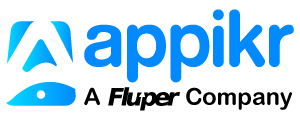DevOps and Agile are the two most common app development methodologies that are widely used by the development agencies across the globe. The common goal for both the methodologies is to ensure swift iPhone app development and many others with ensured quality. There remains a suspicion whether which methodology is better and can both be used simultaneously. So, what is the basic difference between the two and on which grounds one should prefer between these two. What are advantages and disadvantages attached to these and how we can make a good decision depending on the type of project or the kind of end-user.
This blog will offer every possible information on all possible aspects of DevOps and Agile app development and highlight the best use cases for each one. Hope, it will help you make a better decision to improve with efficiency and quality of app development.
What is DevOps?
DevOps is a software development method that focuses mainly on communication, integration, and collaboration among different teams (development & operations) with a motive to deliver results swiftly.
The entire Xamarin app development or any other type is backed by collaboration among teams to enhance code deployment and to generated automated processes. The primary focus remains on swift app delivery with alignment among the teams to ensure bug-free and smooth applications.
What is Agile?
Agile app development refers to continuous iteration of development and testing processes to come up with incremental and evolutionary development strategy. The entire app development process is categorized into smaller pieces and are integrated for final testing phase. The primary target of agile is to address gaps in end-user and developers’ communication.
Advantages of Agile
Unmatched Product Quality: As testing is an integral part of project execution phase in agile development, the quality of the final product is assured.
Client Involvement: End-user is constantly involved in the entire Flutter app development process and changes can be made easily as per their demand and suggestions. It’s a good way to deliver satisfaction to your clients and retain them in future.
Enhanced Control: Due to the transparency, feedback integration, and quality-control features, developers have a better control over the development process.
Constant Improvement: The Agile methodology is based on iterations where each sprint is better than the last one and mistakes are eliminated. This methodology fosters open culture of idea exchange and collaboration.
Advantages of DevOps
Faster Product Shipment: DevOps methodology ensures faster React Native mobile app development process to deliver result quickly along with regular updates on features and functionalities.
Automated Development Process: Usually there are aspects of testing and writing specifications that can be automated. Once you are clear with the objective, DevOps offers immense comfort to automate the development process.
End-to-end Responsibility: As both developers’ team and operations team work in collaboration, they are well aware of their responsibilities and any gap between communication can be easily addressed.
Adaptability: The promise of DevOps is that you have a clear system of processes and prioritization that can handle new things better.
Now let’s discuss some common differences between both the methodologies to give you a clearer vision.
Objective: An AR/VR App Development Company uses DevOps as it aims at managing end-to-end engineering processes so as to deliver products swiftly. DevOps focuses on constant testing & delivery. Agile is an approach based on providing constant updates for more complex projects. Agile focuses regularly on constant changes.
Implementation: The primary goal of DevOps is to focus on collaboration, so it doesn’t have any commonly accepted framework whereas Agile method can be implemented within a range of tactical frameworks like a sprint, safe and scrum.
Team’s Skillset: DevOps divides and allocates skillset between developers and operations team on the other hand, in Agile, all the team members must have wide variety of equal skillsets. If it’s not there, training becomes a priority.
Time: DevOps strives for deadlines and benchmarks with major releases. The ideal goal is to deliver code to production DAILY or every few hours for any wearable app development. Agile development is managed in units of “sprints.” This time is much less than a month for each sprint.
Communication: DevOps communications involve specs and design documents. It’s essential for the operational team to fully understand the software release and its hardware/network implications for adequately running the deployment process.
Scrum is most common methods of implementing Agile software development. Daily scrum meeting is carried out.
Tools: DevOps uses Puppet, Chef, TeamCity OpenStack, AWS whereas Agile uses JIRA, Bugzilla, Kanboard.
Challenges: DevOps process needs to development, testing and production environments to streamline work. The agile method needs teams to be more productive which is difficult to match every time.
Conclusion
Based on the above-mentioned information on both software development methodologies, it can be said that DevOps can be seen as an extension to the Agile. Agile includes designer, tester & developer whereas DevOps goes step further and involves an operations person who can ease the transition from software to deployment.





